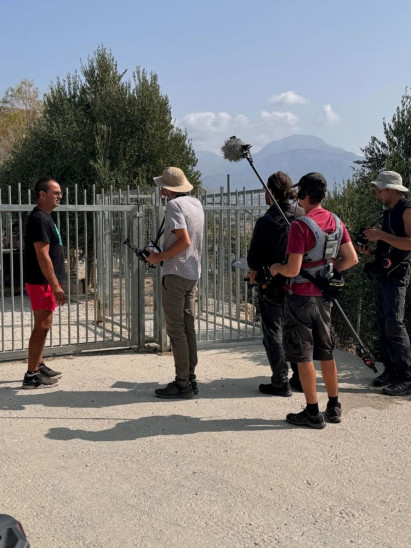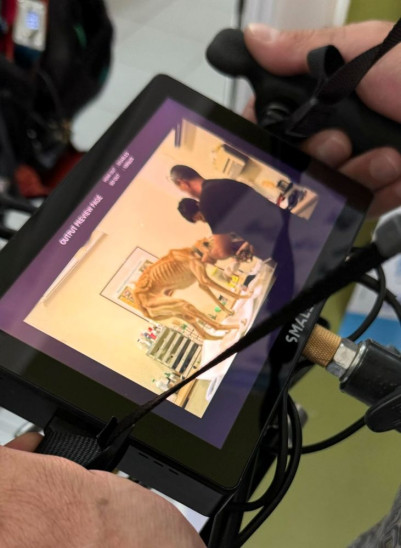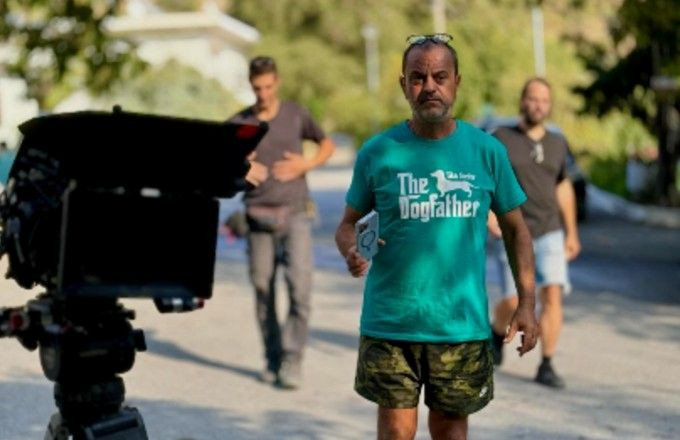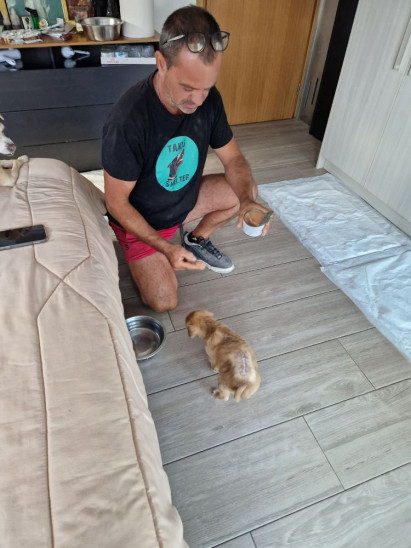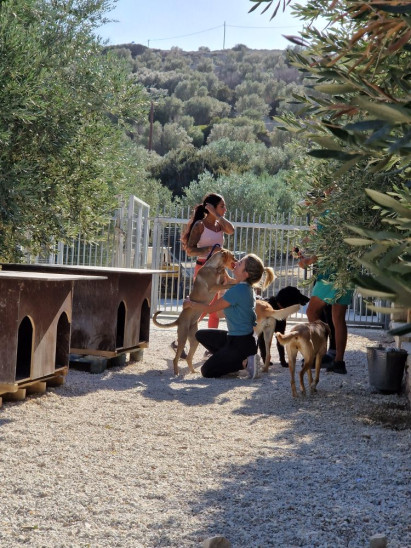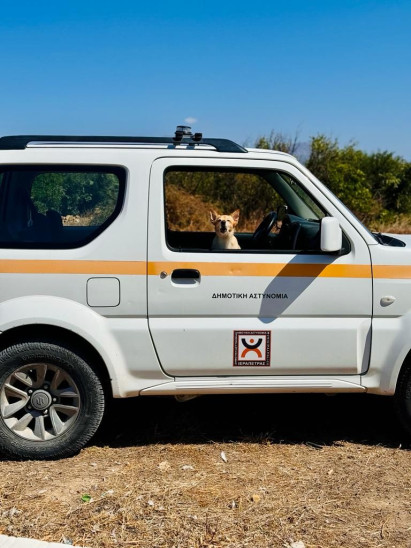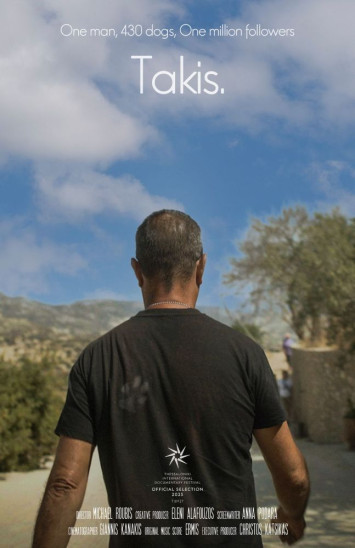The Takis Shelter refuge in Crete has moved people around the world with the dedication and selfless offer of its founder, Takis
By Marina Charalambous
The shelter Takis shelter In Crete, it has moved people around the world with the dedication and selfless contribution of its founder, Takis. This unique love story about stray animals is now becoming the theme of the documentary film “Takis”, which premieres at the 27th Thessaloniki Documentary Festival.
The documentary watches the challenges facing Takis by gradually changing the mentality of the locals, while exploring the pressing issue of stray management in Greece and the impasse leading to the solution of shelters. The factors raise deeper questions about people who try their limits and face the consequences of their choices.
Just before the long -awaited premiere of “Takis.”, His creators speak to skai.gr For the inspiration behind the documentary, the challenges of production and the moving story of Takis, who dedicated his life to the rescue of stray animals.
Eleni Alafouzou – Artistic Curator
What made you decide that this story is worth a documentary?
Takis is really an inspiration, he is loved by people from all over the world. With countless articles and many small videos dedicated to him, it was always my dream to tell his story in the right way.
What do you think Takis Shelter does so unique compared to other shelters?
Takis carefully chooses to put the dogs based on their personality, ensuring that they have plenty of space to run and a protected and covered space to sleep. Visitors and volunteers, many of whom travel from all over the world, spend time every day and socialize with dogs. It is a beautiful and moving shelter, unique in the way that offers a positive and encouraging environment, even though shelters are often associated with sadness.
How do you feel that the documentary premieres at the Thessaloniki Documentary Festival?
I am incredibly excited that people will see all that Takis has accomplished.
Is there a message you would like to send to those inspired by Takis’s story?
Support for local shelters is very important, and if you can do a adoption from such a refuge, even better.
What emotions would you like for every viewer to see this documentary?
I hope this documentary will inspire viewers and highlight how a man can really make a difference. Even more important, I hope to emphasize the importance of respecting all the living creatures around us.
How did you balance the raw and difficult reality with an aesthetically careful narrative?
We focused on the incredible work of Takis. Although stories are often sad, he gives them a second chance in life. This is what makes his work so moving and precious to watch it.
Do you think Takis’ story can inspire similar initiatives in Greece or internationally?
Takis inspires you, not only because of his success but also for the way he uses social media to share his mission. It emphasizes its importance, and I believe that its success stems from the hopeful, positive mentality. His charisma makes him even more influential, attracting people and inspiring them to act.
Michalis Roubis – Director
How did you manage to balance between the sensitivity of the subject and the harsh reality?
I do not believe that there can be a balance on such a matter. It is quite difficult to see that there were places and people who once treated animals as “objects” and “tools”.
Seeing how the situation is now in the local community of Ierapetra and how much people have sensitized -not only because of Takis -but thanks to the efforts of all people I feel that animal abuse and abuse is something that fortunately has disappeared in the greatest percentage.
So the harsh reality is that in order for our society to move on to such issues we all need to help and teach our children and our fellow humans that these animals need our love and care.
How difficult was it to record the most emotionally charged moments in Takis’ history?
It was quite difficult, because when you direct a documentary you have to be an observer on what’s going on. It was not easy to see or listen to stories with bad events but it is part of the story. Takis has saved 3,500 dogs to date, and from these dogs has many stories that most of the time have a very unpleasant start, the pleasant is of course they have a happy ending.
What feelings did you want to cause to the public through the documentary?
What we wanted to show mainly is that when you believe in something you can do it. Our approach is the one in the documentary. He has a happy mood and atmosphere for the most part, because while Takis may have gone through many difficulties but in the end he managed to achieve what he was trying to do.
He didn’t put it down, if he had put it on it would be all different. So it is very beautiful to see that a man has shown the way to so many other people to change the perspective of things in Ierapetra, Crete and not only.
Is there a scene that stands out as the strongest of the documentary?
I can’t stand out, maybe because I’m very deep into the documentary material and every scene reminds me or means something special to me.
There is a scene with one of the first dogs saved by Takis, which was very suffering as it was abused but eventually decided that it is a very tough story to get into the documentary. I keep this scene in my mind to always remember that love and care is something that can heal even the biggest wounds.
What was the biggest challenge you had to face as a director until the final result of the documentary?
The challenge was to capture with realism and immediacy what is happening in a shelter with 500 dogs and a man who has given voice to all these animals. The title of the documentary in my opinion shows that if this man did not exist, it would be nothing as it is now.
How do you think this movie will affect the audience?
Only positively. Even if one is not too close to the animals, I want to believe that they will understand that animals have emotions like humans. So emotion, joy and hope will surely create the viewer a pleasant situation. I would like to have more “takids” in our society that put us first and then the ego, maybe that made us better people.
If you could describe the documentary in three words, what would they be?
Love, hope, selflessness.
How did you manage to capture Takis’ relationship with animals in such a true way?
It was the easiest! Because Takis’ relationship with the animals is so strong and so true that we just recorded it.
Anna Podara – Research, Scenario
What made you difficult during the research and writing of the script?
This movie is an observation documentary. We didn’t write any scene, we didn’t set up any incidents. We have observed Takis’ daily life for fifteen days. The material we brought behind the shooting was long but had the same repetitive events. Takis is a soldier in the way the shelter manages. It has a rigorous daily program that is kept out. From morning awakening, animal feeding, lunch to evening supervision. It could not do otherwise, as it has to handle a very large number of animals. The challenge in writing the script was to read behind his daily routine, and to highlight the difficulties and challenges he faces as well as his own personality. These seemingly repetitive events came in a series that keeps the viewer’s interest to the end.
How did you decide the style and visual narrative of the film?
The style and visual narrative of the film was shooting by Field director Nikola Pottakis and photography director, Yiannis Kanakis. The overall curator was the director, Michalis Roubis in collaboration with Eleni Alafouzou, who is the documentary’s creative production.
How do you see the role of documentaries in modern society?
The documentaries record the reality but with the mediation of the creators. It is like a lens that turns its light in a particular direction. A documentary says to the viewer: “Look here. There is that too. There is this view too. What do you think about it? ” Their role, in my opinion, is to get out of the “bubble” of our daily lives and to give room to see reality through someone else’s eyes. In today’s age, when we all consume quickly and hypnotized, tones of content on various platforms, it is rare to devote a whole time to something that will unleash us and sharpen our critical thinking. This luxury offers us a good documentary.
What would you like to keep the audience after the film’s screening?
My goal, when I was writing the script, is to create the viewer the same questions that I was created and me when I did the research. Recognizing a problem and taking responsibility makes you a hero? What is the cost the hero pays for his boldness? Takis started taking care of five dogs in a garbage dump and ended with 500 animals. He has not left the shelter for 10 years, not even a day. He has taken over a huge project on his own, struggles to fill a barrel that has no bottom. Could he do otherwise? And what is it finally that gives him a reward?
Do you think Takis’ story can inspire similar initiatives in Greece or internationally?
Takis’ story can inspire us all, like any story of a man who does something innovative, insists and succeeds. Takis undertook to take care of the abused animals in his own community when no one saw where the problem is. From a man who said crazy, who said that “the animals were eaten” he became the one who thinks when they see a abused animal in Ierapetra. The one who, as the vet says in the documentary “is a relief for the local community”. He managed to change the mentality of the locals and drag others into his own madness, such as the municipal police officer, Yiannis Gaitanakis, who has made a municipal stray animal management service that is a model for all of Greece.
Also, the way he manages animal care in his shelter is an example to imitate. As we can see in the documentary, it attaches great importance not only to the physical but also to the mental trauma of the animal animal, and stresses again and again that shelters are not a solution but can become an animal hellless if there is no proper management.
What is the most important thought or message you want to leave the documentary to the viewer?
This is not another complaint about the problem of strangers in Greece, which shakes the finger strictly and concludes with conclusions. We were very careful from the beginning not to indicate causes or to highlight heroes. We want the viewer to leave the room by recognizing a complex social problem. This problem that Takis identified in his own community and assumed a responsibility that does not correspond to him, and together a cost that does not. We want the viewer to give his own answers. And perhaps, the next time he sees a dog tied to a barrel or closed for years on the opposite balcony or abandoned on the side of the road, not to overtake it as normal.
The documentary premieres on Wednesday, March 12 at 22:00, in the “Tonia Marketakis” hall.
You can get your tickets to find yourself at the documentary premiere here
Source: Skai
I have worked as a journalist for over 10 years, and my work has been featured on many different news websites. I am also an author, and my work has been published in several books. I specialize in opinion writing, and I often write about current events and controversial topics. I am a very well-rounded writer, and I have a lot of experience in different areas of journalism. I am a very hard worker, and I am always willing to put in the extra effort to get the job done.


